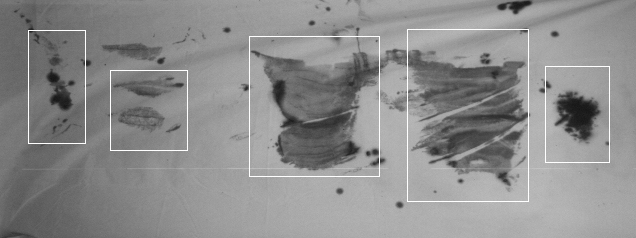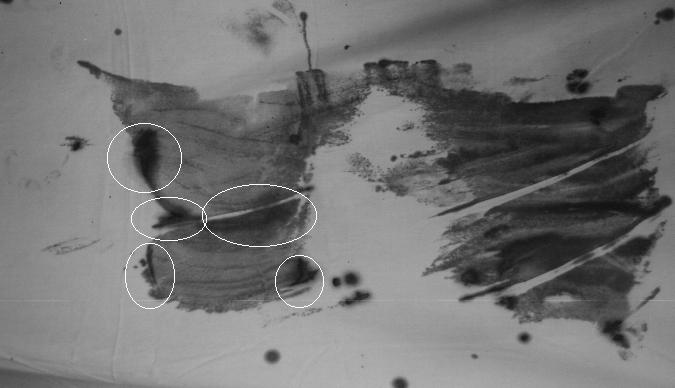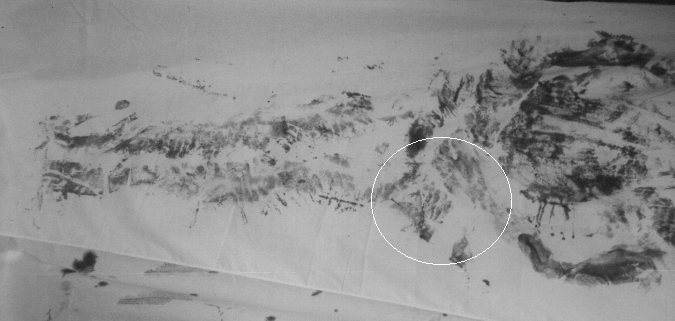
Results
The rear image of the shroud in full shows that it was impossible for the model to lie completely flat on the hard floor.
The model had only touched the cloth at five points despite running with black paint.
This result is not at all similar to the full contact back image of the shroud of Turin.

The lower test sheet showing contact between model's back and cloth.
This detail shows how the paint had puddled as it ran down the buttocks onto the cloth.
The pigment ran along the surface of the skin and made puddles where it contacted the cloth.
It can be seen that the fluid did not drop onto the areas below the thighs or the small of the back.
The lower detail shows how the muscles of the back printed onto the cloth and also shows that there was a problem with lower sheet creasing.

Rings indicate areas of paint puddling
It can be seen from the next photograph that the front image was not as clearly defined as the original shroud image or of the same perspective.
It is clear from this photograph that moulding the cloth to the body does not produce the artificial elongation of the right arm which is observed on the Turin shroud.

The top test sheet showing arms too short.